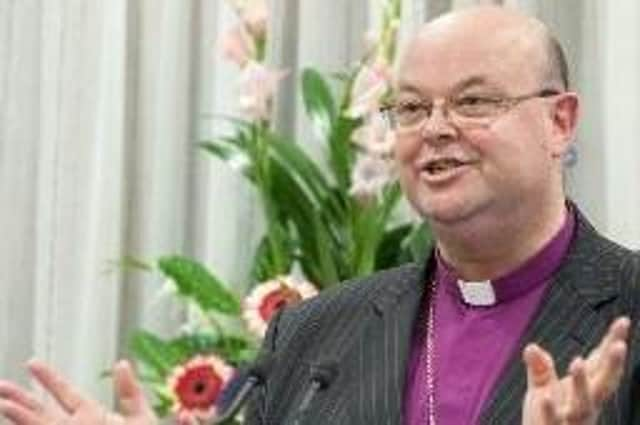Jeff Dudgeon: The Anglican church will not describe the Cork massacre of Protestants in 1922 as sectarian


The May 5 article (see link below) was headlined ‘Irish state must recognise wrongs done in massacre’ and concerned the murders of 13 Protestants in Co Cork in April 1922, a century ago after the truce.
It was reported that Dr Paul Colton, the Church of Ireland Bishop of Cork, Cloyne and Ross, “named all 14 of those who died including the IRA commandant, Michael O’Neill, whose shooting during a raid on a Protestant home appeared to spark the string of IRA reprisals – and at whose grave he laid a wreath”.
Advertisement
Hide AdAdvertisement
Hide AdBishop Colton also declared, “The historiography of the period and the massacre events has been written about extensively and debated with different narratives, emotions and responses elicited. Why it happened and what the motives of people were are elusive questions.”
He then asked, “What can we know with certainty at this remove?”
This is sadly evasive and only illustrates continuing community fear and insecurity.
History is always written and rewritten but we don’t opt out of it.
Advertisement
Hide AdAdvertisement
Hide AdThomas Hornibrook and his son Samuel and their relative Captain Herbert Woods resisted the IRA’s home invasion that April night.
It has been excused with the fanciful story that the Hornibrooks’ car was being seized and its dynamo needed.
The raiding party returned in daylight to capture the three men.
After a supposed inquest which found Herbert Woods guilty of murder they were then horribly killed, possibly being hanged.
Advertisement
Hide AdAdvertisement
Hide AdTheir bodies were dumped in a bog and never given a Christian burial.
In the following two days, 10 more Protestants including two 16-year-old boys were murdered and a clergyman badly wounded.
The centenary news stories and articles have finally started to use the word sectarian, with University College Cork historians Andy Bielenberg and John Borgonovo stating that, as all 13 Bandon Valley fatalities were Protestant, there can “be little room for doubt about the sectarian nature of the attacks.”
That the killing of the raider Michael O’Neill was a trigger or sparking event for the massacre is the conventional view in the Republic, and of course on Wikipedia.
Advertisement
Hide AdAdvertisement
Hide AdIt almost excuses the later 10 murders. What cannot yet be said publicly is that the raid was the first of the sectarian murders not the trigger.
No IRA unit — after O’Neill’s death — could in 48 hours mount the necessary operation for a dozen or more attacks: decide the plans, target the victims, locate addresses, gather the assailants and so precisely effect the scheme.
Correcting that narrative is made more difficult by another unspoken aspect.
There is a story that the bodies of the three disappeared were, in 1948, eventually found and interred in a Church of Ireland graveyard.
Advertisement
Hide AdAdvertisement
Hide AdThis fact was supposedly only uncovered in 2015 after an English descendant of the family, Martin Midgley Reeve, visited the area.
He was told the bodies had been dug up from a bog and privately reburied. The secrecy was to avoid controversy, the rector involved declaring, “There was no point raking up the whole matter”.
This silence again seems designed to minimise interest in what were a series of sectarian murders on the scale of Bloody Sunday.
Southern Protestants saw their future that month and left Cork in their hundreds, as is evidenced by the Jagoe and Beamish families.
Advertisement
Hide AdAdvertisement
Hide AdSadly, the Bishop’s recent inability to apportion blame and the possible secret exhumation tell us that there is a great fear of reprisal in the area and that the Protestant population are effectively told to keep their heads down.
This view has to be challenged and at least discussed. The question now is where were the bodies reburied?
Why can’t we be told and did the bishop lay a wreath at that site?
If the reburial is a myth and the bishop cannot provide a location, the Independent Commission for the Location of Victims’ Remains must now be asked to add the three Hornibrook names to their list for investigation.
Advertisement
Hide AdAdvertisement
Hide AdIt is time for the Irish government to face up to the task of assisting of finding these three disappeared to prove there is no longer a threat to Protestants.
• Jeffrey Dudgeon is author of Roger Casement: the Black Diaries and edited Legacy: What to do about the Past in Northern Ireland?
• Ruth Dudley Edwards will return next week
Bandon Massacre May 5: Irish state must recognise sectarian slaughter of 13 boys and men
Bandon Massacre May 11: Many in Republic of Ireland still loyal to GB but must keep their heads down
• Other comment articles:
Advertisement
Hide AdAdvertisement
Hide Ad• Owen Polley May 23: Many culprits are to blame for Irish Sea border
• Ben Lowry May 21: There’s been a shift in London towards sympathy for NI over protocol
• Ben Lowry May 21: I do love Bangor, but it is hard to think of it as a city
Advertisement
Hide AdAdvertisement
Hide Ad• John Redwood May 20: The government must act soon over Protocol – NI unionists want their country back
• Ben Habib May 18: There isn’t even a real threat of unilateral action on protocol
• Jim Allister May 17: Boris Johnson flew into NI with weak message on the protocol
• Ruth Dudley Edwards May 17: Thank you Lithuania for pursuing Omagh bomber
Advertisement
Hide AdAdvertisement
Hide Ad• Henry McDonald May 14: Will Boris Johnson deliver beyond his rhetoric?
• Ben Lowry May 14: Here are six of the broad reasons for the turn against unionism
• Owen Polley May 19: Expect full-tilt lies and hysteria in weeks ahead over Protocol
• Owen Polley May 16: Getting rid of the protocol is more important than the return of Stormont